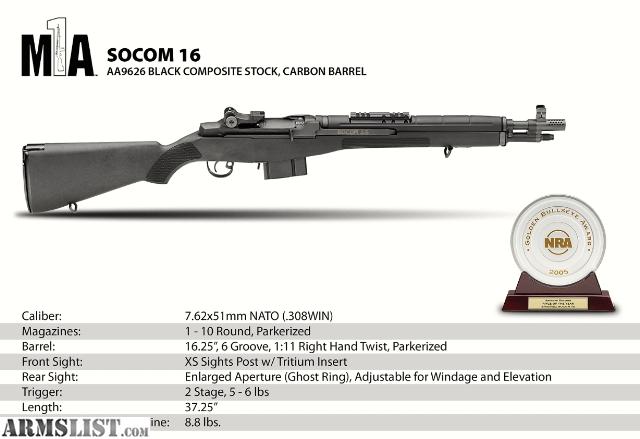
A more vertical pistol grip sits behind the triggerguard, and the trigger itself is a two-stage unit with a pull weight between 5 and 6 pounds.

The chassis also has a generous magazine well for fast and positive magazine exchanges, and the rifle comes with a 10-round, Parkerized magazine. On top of the handguard, the rifle comes with a forward rail for mounting a long-eye-relief scope or reflex sight in a scout-type position. Next are M-LOK slots on the sides and bottom for accessories, and Springfield ships the rifle with one 7-slot and two 3-slot rail sections for these areas. Starting from the front of the chassis and moving rearward, the forend features quick-detach (QD) sling attachment points on both sides. The barrel, gas system and Garand-style action are mounted in a solid synthetic stock designed for use in close quarters. The rifle is also available with Springfield’s clip guide red-dot mount and a Vortex Venom red-dot sight, which enables fast target acquisitions indoors or out. The rear sight is adjustable for windage and elevation. Attached to the gas block and muzzle device is an XS tritium front sight that works in conjunction with a rear ghost ring aperture. There is no porting on the bottom to create a dust signature when firing from prone. The barrel also comes from the Springfield factory with a muzzle brake that controls muzzle rise effectively by sending most of the gas and blast upwards. The M1A SOCOM 16 CQB starts with a 16.25-inch, carbon-steel barrel with six-groove, 1-in-11-inch-twist rifling and a Parkerized finish. Finally, it looks like Springfield Armory has a solution with the new M1A SOCOM 16 CQB, which I recently got my hands on for testing. Other muzzle attachments were available for the Scout and standard models, but you were limited to the brake on the SOCOM 16. Previous stocks cost as much as the rifle and added a couple pounds to what was a light and handy machine. There were only two drawba cks: the stock and the muzzle blast.Īftermarket precision stocks were available, but well-built stocks designed for close quarters were costly and downright heavy. Then Springfield unveiled the SOCOM 16 variant, which offered greater portability without losing any firepower. It could even work well in close quarters with Hornady’s excellent 110-, 125- or even 155-grain TAP ammo. A few precision versions of M1As were fielded, but the platform’s real sweet spot was as a patrol rifle. As a police marksman, the advantages of a semi-auto were clear to me two decades ago. Testing just about every reasonably configured rifle at the time, the only one that worked consistently for me with decent accuracy was the M1A.įor a time, M1A rifles were costly and not always easy to equip. Add mud, snow, muck or other adverse conditions and the difference was more striking.

But reliable semi-autos could be hard to find in the past.Įvery rifle design has its fans and detractors, but the M1A was reliable when its competition couldn’t get through a 20-round magazine when used in pristine conditions. Most police agencies still use 7.62mm/.308 precision rifles, so obtaining more rifles in this chambering would only ease logistics. The 7.62x51mm remains a common NATO round and is still a prolific hunting round in America. Several rounds have emerged, but none yet provide the availability of bullet choices and loads coupled with long-range viability.

Of course, this isn’t a new search-others have done the same thing, including examining other calibers.


 0 kommentar(er)
0 kommentar(er)
